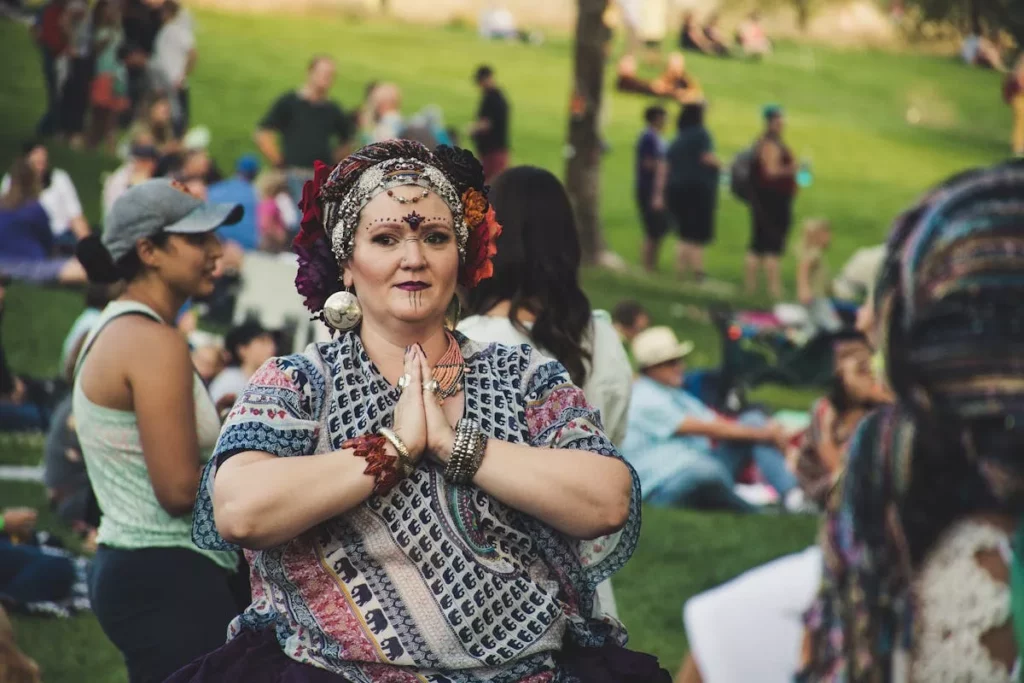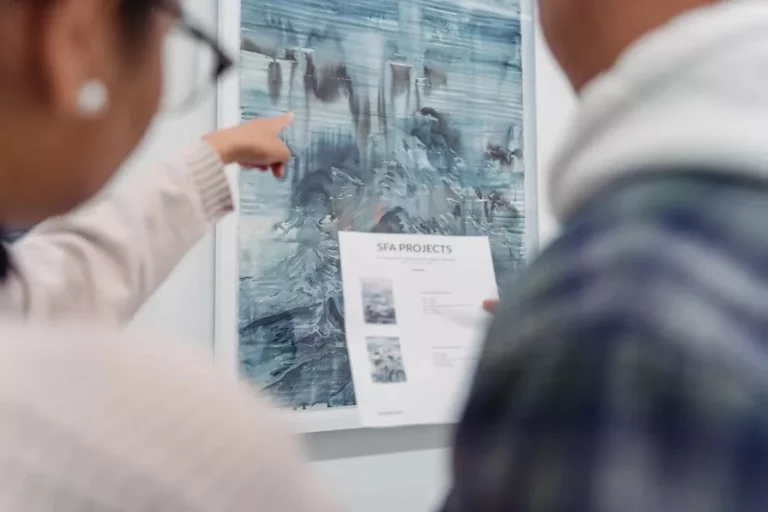艺术表达拥有非凡的力量,能够塑造叙事、影响观念,并激发社会变革。从抗议歌曲激昂的旋律到当代舞蹈的迷人舞姿,艺术表达对社会的影响深远而深远。在这篇博文中,我们将深入探讨艺术创造力如何超越界限,与个体产生共鸣,挑战常规,并推动积极的变革。加入我们,踏上艺术与行动主义交汇的迷人旅程,探索艺术表达的迷人交汇及其对社会的深远影响。
艺术表达在塑造文化规范方面对社会的影响
通过艺术改变社会价值观
艺术表达长期以来一直是社会价值观和规范演变的驱动力。通过视觉艺术、音乐、戏剧和舞蹈等各种艺术形式,艺术家们挑战着现有的信仰和传统,引发了批判性对话,最终促成了社会的变革。通过展现多元化的视角和体验,艺术拥有独特的力量,能够影响个人对周围世界的感知。
艺术对现有信仰和传统的挑战
艺术能够通过呈现另类的叙事和视角,挑战根深蒂固的社会规范。它如同一面镜子,反思文化习俗和信仰,鼓励人们质疑现状,思考新的可能性。艺术家常常运用他们的作品来探讨紧迫的社会问题,揭示那些需要关注和采取行动的不公正和不平等现象。
展示艺术引领社会变革的案例研究
众多案例研究凸显了艺术表达对社会的深远影响。例如,20世纪20年代和30年代的哈莱姆文艺复兴将非裔美国人的艺术、音乐和文学推向了前沿,挑战了种族刻板印象,并为民权运动做出了贡献。此外,像班克斯这样的当代艺术家利用街头艺术作为探讨政治和社会问题的平台,激发公众讨论,倡导变革。
关键要点:
- 艺术表达在塑造文化规范和价值观方面发挥着至关重要的作用。
- 艺术挑战现有的信仰和传统,促进批判性思维和对话。
- 案例研究表明艺术引领的社会变革如何推动社会转型。
欲进一步了解艺术对社会的影响,您可以探索 现代艺术博物馆 关于艺术与社会变革的文章。
通过视觉艺术增强同理心和理解力
利用视觉艺术来促进同理心和社会意识
视觉艺术是培养社会同理心和社会意识的强大媒介。通过令人回味的图像和象征,艺术家能够传达复杂的情感和体验,从而与观众产生深层次的共鸣。通过展现多元化的视角和叙事,视觉艺术鼓励人们设身处地为他人着想,培养同理心,并理解不同的生活经历。
探讨艺术如何促进不同社区之间的理解
艺术表达超越语言障碍和文化差异,创造出一种连接不同背景人们的通用语言。视觉艺术展览和装置将来自不同社群的人们聚集在一起,提供了一个对话和交流思想的平台。通过分享艺术体验,社群能够找到共同点,并颂扬文化多样性的丰富性。
艺术作为促进对话和包容性的工具
艺术能够激发关于社会问题的有意义的对话,并促进社会包容性。视觉艺术家通过描绘边缘群体的声音并倡导社会正义,发起挑战偏见和刻板印象的讨论。公共空间的艺术装置鼓励公众参与和反思,培养社区意识和共同责任感,从而创建一个更具包容性和同理心的社会。
关键要点:
- 视觉艺术通过传达复杂的情感和体验来促进同理心和社会意识。
- 艺术表达可以促进不同社区之间的理解,弥合文化鸿沟。
- 艺术是促进社会问题对话和促进社会包容性的工具。
音乐作为社会运动的催化剂
音乐推动社会变革的历史例子
纵观历史,音乐在推动社会变革和激发争取平等与正义的运动中发挥着关键作用。美国民权运动时期的《我们必将克服》(We Shall Overcome)和意大利反法西斯抵抗运动时期的《Bella Ciao》等标志性歌曲,都体现了音乐如何凝聚社群、激发集体行动。音乐家们经常利用他们的平台来放大边缘群体的声音,并倡导社会变革。
分析音乐对社会态度和行为的影响
音乐通过传递强有力的信息和情感,对塑造社会态度和行为有着深远的影响。探讨政治压迫、歧视和社会不平等的歌词能够引起听众的共鸣,引发反思和行动。通过音乐,艺术家可以培养听众的同理心、团结精神和合一感,从而促进对社会变革的共同承诺。
歌词在传达反抗和团结信息方面的力量
歌词能够传达反抗、团结和希望的信息,将人们团结在共同的事业和价值观周围。抗议歌曲历来被用来表达不满,挑战压迫性制度,激励人们争取正义和平等。通过利用音乐的情感影响力,艺术家可以点燃激情和行动,推动社会意识的积极转变。
关键要点:
- 从历史上看,音乐一直是社会运动的催化剂,激发集体行动和团结。
- 音乐对社会态度和行为的影响是巨大的,它能培养听众的同理心和团结。
- 歌词在通过音乐传达反抗、团结和社会变革的信息方面发挥着至关重要的作用。
戏剧及其在解决社会问题中的作用
戏剧能够激发对社会问题的思考和讨论
戏剧长期以来被认为是激发思考、引发紧迫社会问题讨论的有力媒介。通过引人入胜的叙事和感人至深的表演,戏剧作品可以聚焦不平等、歧视和侵犯人权等主题。通过让观众沉浸在发人深省的故事情节中,戏剧挑战了先入之见,并鼓励人们对复杂的社会动态进行批判性反思。
突出推动社会变革的戏剧
历史上,许多戏剧都通过直面争议性的社会问题,催化了社会变革。例如,洛林·汉斯伯里的《阳光下的葡萄干》探讨了种族歧视和社会经济差距,莫伊塞斯·考夫曼的《拉勒米计划》则探讨了LGBTQ+群体的权利和仇恨犯罪,这些作品引发了人们的讨论,并鼓舞了人们倡导变革。这些戏剧作品展现了叙事在影响公共话语和塑造社会价值观方面的力量。
旨在倡导变革的合作戏剧项目
合作戏剧项目汇聚艺术家、活动家和社区,创造富有影响力的体验,倡导社会变革。通过关注当地议题并扩大多元化声音,这些项目鼓励观众参与,并激发他们对边缘群体的同理心。戏剧的沉浸式特性有助于更深入地理解复杂的社会问题,培养参与者的集体责任感和团结精神。
关键要点:
- 戏剧是社会问题思考和讨论的催化剂,促使观众进行批判性反思。
- 涉及争议话题的戏剧有可能激发社会变革和倡导变革。
- 合作戏剧项目让社区参与对话和行动,培养同理心和社会意识。
舞蹈与社会变革的交汇
探索舞蹈如何传达韧性和赋权的叙事
舞蹈是传达韧性、赋权和社会变革叙事的强大媒介。舞者通过精妙的动作和富有表现力的编舞,传达情感和故事,与观众产生共鸣。无论是通过传统文化舞蹈还是当代表演,舞蹈都能激发灵感,鼓舞人心,引发人们对重要社会问题的关注,并倡导积极的变革。
舞蹈作为挑战刻板印象和促进多样性的媒介
舞蹈拥有独特的力量,能够挑战刻板印象,打破藩篱,促进社会多元化。舞者展现多元的风格、技巧和文化影响,颂扬人类表达和身份的丰富性。通过包容性的舞蹈表演和合作,艺术家们能够加深对社群中多元体验和视角的理解和欣赏。
利用舞蹈倡导社会正义和平等的倡议
世界各地众多倡议利用舞蹈的力量来倡导社会正义与平等。从致力于解决性别不平等和种族歧视问题的舞蹈行动项目,到支持边缘群体的社区舞蹈项目,舞蹈倡议在推动积极的社会变革中发挥着至关重要的作用。这些倡议通过舞蹈动作和叙事与观众互动,放大了那些通常被忽视的声音,推动人们提高认识,采取行动,构建一个更加公平、包容的社会。
关键要点:
- 舞蹈传达了韧性和赋权的叙事,激励观众支持社会变革。
- 舞蹈通过展示多种文化影响和观点来挑战刻板印象并促进多样性。
- 利用舞蹈促进社会公正的举措倡导平等、扩大边缘化的声音,促进社会更加包容。
艺术表达对社会的影响真的能够影响社会变革吗?
艺术表达能够塑造文化规范、挑战既有观念并倡导社会正义,从而对社会产生重大影响。通过音乐、视觉艺术、戏剧和舞蹈等各种艺术形式,艺术家可以引发批判性对话,激发同理心,并推动积极变革。
艺术如何促进社区内的同情和理解?
艺术能够展现多元视角,探讨社会问题,并促进社群间的对话,从而增进同理心和理解。视觉艺术、音乐、戏剧和舞蹈等媒介,让人们能够与自身以外的情感和经历产生共鸣,从而培养同理心和共同理解。
音乐在推动社会运动中发挥什么作用?
音乐历来是社会运动的催化剂,激发团结、抵抗和倡导变革。通过强有力的歌词、旋律和表演,音乐家可以放大边缘群体的声音,挑战社会规范,并动员社区采取集体行动,争取社会正义。
为什么戏剧是解决社会问题的有效工具?
戏剧提供了一个讲述故事、表达情感和批判性反思社会问题的平台。戏剧作品的沉浸式特质使观众能够融入复杂的叙事,感同身受地理解多元的视角,并直面富有挑战性的话题,最终激发对话,提升认知。

舞蹈如何促进社会变革和包容性?
舞蹈传达着韧性、多样性和赋权的叙事,是挑战刻板印象、促进文化包容的媒介。利用舞蹈促进社会正义的倡议倡导平等,放大边缘群体的声音,并在参与者之间培养社区意识和联系。
为了进一步探索艺术表达的意义及其在塑造社会中的作用,请务必 今天庆祝艺术表达欣赏.



